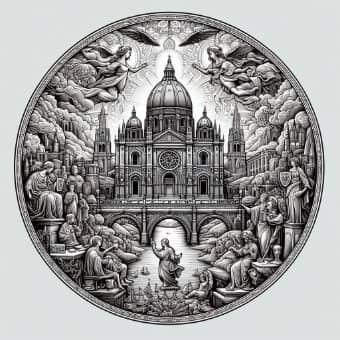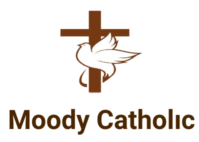Catholic Brilliance
Art, Literature, Culture
The Catholic Church has been a monumental influence in the world of art, literature, and culture throughout history. Its impact is broad, spanning from the adornment of spectacular churches to the inspiration of classic literary works and performances. This blog post will explore some significant contributions of Catholicism to these cultural fields.

This blog post contains affiliate links. When you click on a link on this page and make a purchase I may earn a small commission, at no additional cost to you. Thank you for your support.
Art
Renaissance Art
The Renaissance, a flourishing period of learning and culture, saw significant contributions from Catholic patrons and artists. Figures like Michelangelo and Leonardo da Vinci created works with deeply imbued religious themes. Michelangelo’s Sistine Chapel ceiling and “The Last Judgment” are profound examples of art sponsored by the Church and reflective of its teachings.
Baroque Art
In the Baroque period, the Catholic Church utilized art to express its might and influence amidst the Counter-Reformation. Artists like Caravaggio employed chiaroscuro, a technique that uses stark lighting contrasts, to invoke intense emotion and religious fervor.
Bernini’s St. Peter’s Basilica in Rome epitomizes the grandeur and the spiritual power of Catholic art during this era.
Literature
Medieval Literature
The Catholic Church was the center of education and literacy during the medieval period. Much of the literature from this time was written by clergy or under their influence.
The “Divine Comedy” by Dante Alighieri, often considered the greatest literary work composed in the Italian language and a profound Catholic work, guides readers through Hell, Purgatory, and Heaven.
Modern Literature
Catholicism has influenced many modern writers who have explored themes of redemption, suffering, and transcendence. G.K. Chesterton and J.R.R. Tolkien, who infused their writing with their Catholic beliefs, have contributed significantly to English literature with works like “The Man Who Was Thursday” and “The Lord of the Rings” series, respectively.
Culture
Music and Performance Arts
Gregorian chant, a form of plainchant used in Catholic liturgy, is one of the earliest and most significant forms of music in Western culture. Its meditative and solemn tone complements the spiritual atmosphere of the Mass.
Additionally, the Vatican has sponsored numerous performances of sacred music over the centuries, helping to preserve and celebrate the cultural heritage.
Architecture
Catholicism has profoundly influenced architectural developments. The Gothic cathedrals of Europe, like Notre Dame in Paris, embody the Catholic principles of upward movement and light, meant to draw the gaze and spirit upward towards God.
The use of stained glass, statues, and religious symbols in these cathedrals speaks to a broader narrative of spirituality and art combined.
Holidays and Festivals
Catholicism has enriched cultural practices by influencing the celebration of various holidays and festivals which have a global reach. Christmas and Easter are significant events in the Catholic Church that have been embraced worldwide with various cultural expressions in music, food, and public celebrations.
In conclusion, the integral role of Catholicism in shaping cultural history is undeniable. Through art, literature, and broader cultural practices, the Catholic Church has not only been a patron but also an inspirer.
Its extensive patronage and intrinsic themes of suffering, redemption, and the human condition continue to influence artists, writers, and cultural practitioners across the world.
